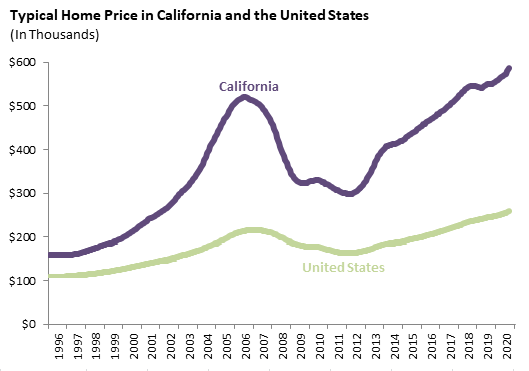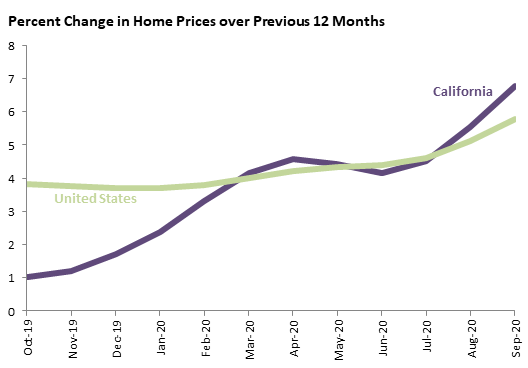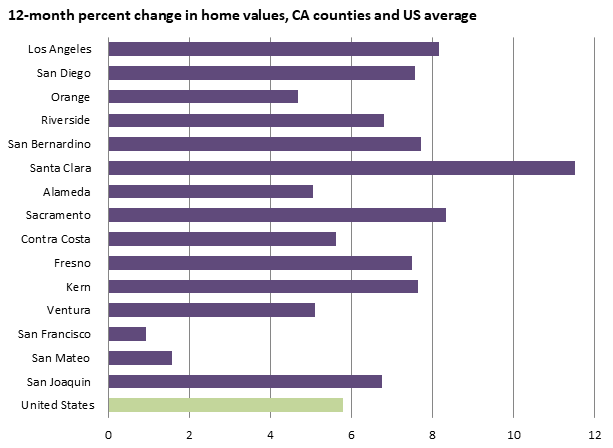Home prices are important to the California economy for a number of reasons. In the short and medium terms, home price increases often drive construction activity, which in turn spurs employment growth in a wide range of sectors. In the longer term, chronically high housing costs have hurt the state’s business climate and been a key reason California loses residents to other states on net in most years.
September 2020 data suggest that California home price growth has accelerated despite the pandemic and the recession, and that nationwide home prices are seeing a smaller surge. Mortgage rates are far lower than a year ago, making monthly mortgage payments more affordable (all else equal) and contributing to the price increases. The typical home in California has appreciated 6.8 percent since September 2019, while the national figure is 5.8 percent.
The slower home price growth that prevailed in 2018 and 2019 made a minor dent in the affordability gap between the state and the rest of the country. Housing in California has always been relatively expensive, and the gap has widened considerably since 2012. Previous recessions have had disparate effects on home prices: they were largely unaffected by the collapse of the dot-com bubble in 2001, while in the late 2000s the collapse of the housing bubble was the single biggest factor that led to the financial crisis. Early evidence suggests that the affordability gap is widening again.

The graph below shows appreciation over the past 12 months for the state’s 15 largest counties. The two most expensive of these, San Francisco and San Mateo, have lagged the rest of the state while neighboring and slightly less expensive Santa Clara has seen the sharpest growth. The sluggishness in San Francisco and San Mateo may be driven in part by the shift to remote work resulting from the pandemic, although it is not clear why Santa Clara has seen the opposite pattern.


